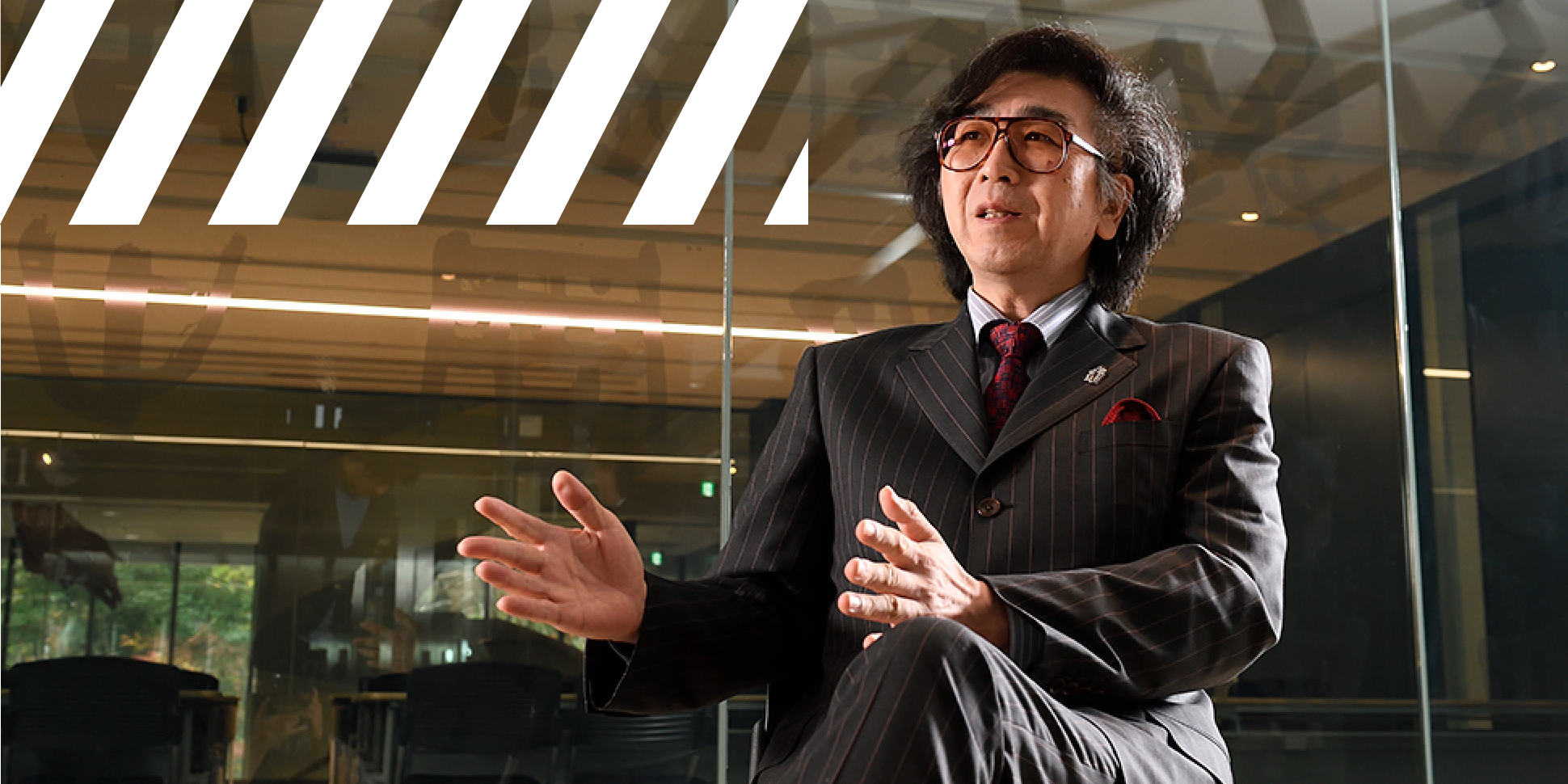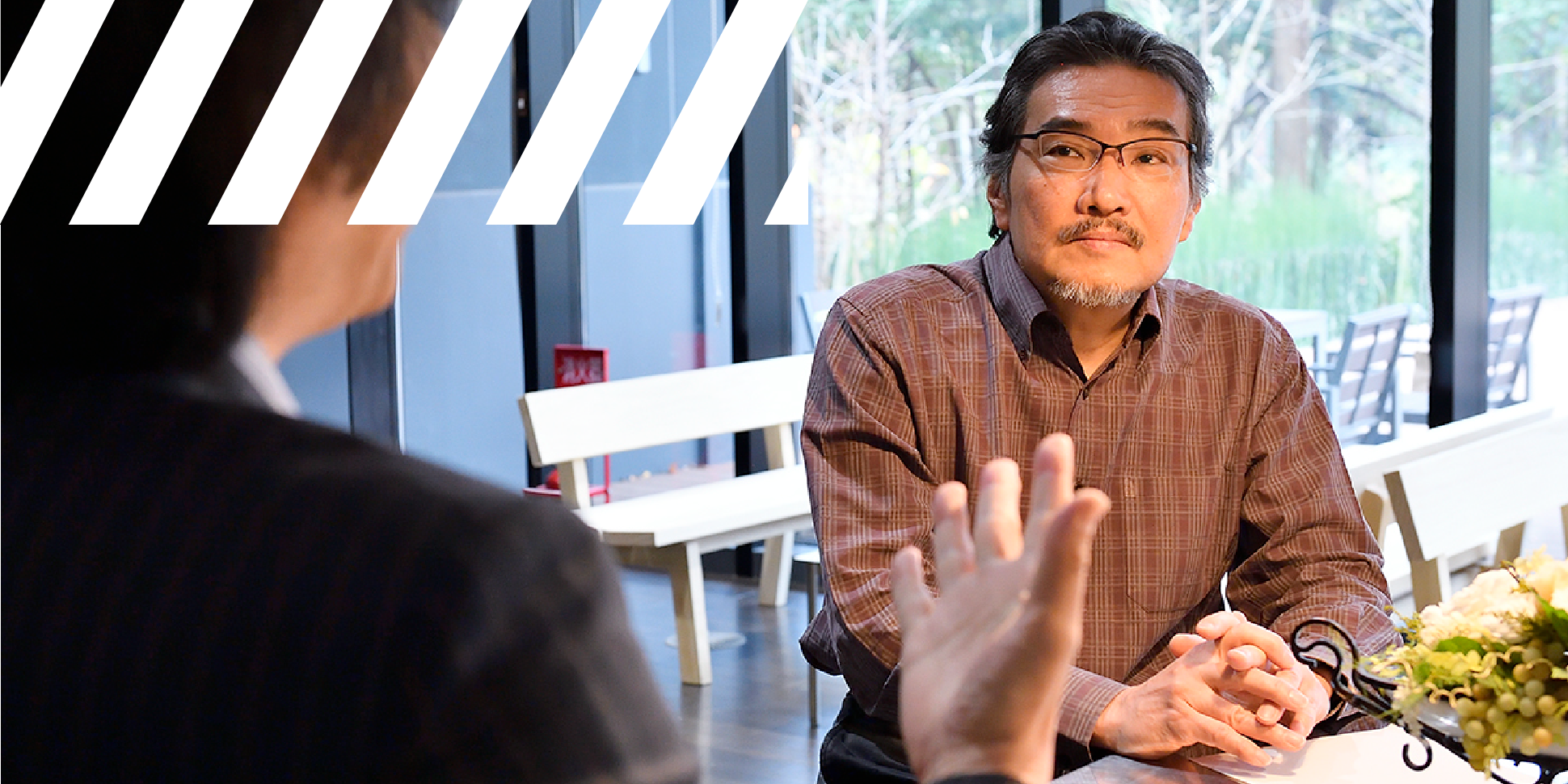Why “Humanics” research now?
What kind of talent does The Ph.D. Program in Humanics (Five-year Doctoral Program) seek to develop? Why is Humanics a necessary academic discipline in the future? Professor Masashi Yanagisawa, the program coordinator of this program and a world leader in sleep research, and Professor Yoshiyuki Sankai, a leading expert in robotics and Cybernics research in Japan, talked passionately about their own experiences.
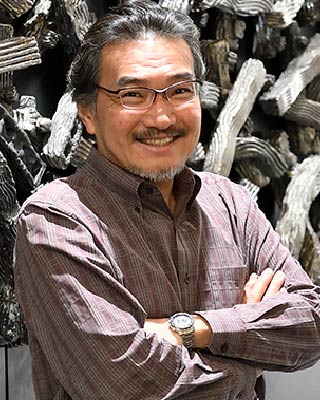
Masashi Yanagisawa
- Program Coordinator,
Ph. D. Program in Humanics
Director/Professor,
International Institute for Integrative Sleep
Medicine (WPI-IIIS), University of Tsukuba - Research field: Neuroscience
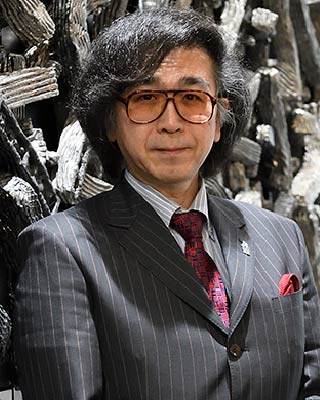
Yoshiyuki Sankai
- Co-Coordinator,
Ph. D. Program in Humanics
Director,
Executive Research Director,
Professor, Institute of Engineering,
Information and Systems,
R&D Center for Frontiers of
MIRAI in Policy and Technology,
Center for Cybernics Research,
University of Tsukuba - Research field: Cybernics
Yanagisawa>First, I’ll ask Prof. Sankai: the biggest selling point of the Ph.D. Program in Humanics is to cultivate leaders who can fluently use the “languages” of both biomedical science and physical sciences/engineering/informatics.1 That’s exactly what Prof. Sankai is like. You are working on robots right now. What made you focus on exoskeleton-assisted robots?
Sankai>I always liked robots and the sciences, but I think that my interest in “people” played an even larger role in shaping my area of focus. When looking at human life, there are some that reach an old age before succumbing to illness, while others die too early from illnesses they were born with. I wanted to create technology that improves, expands, and remedies the natural functions of humans across this spectrum of people, and going one step further, I wanted to create robots, cyborgs, and Cybernics technologies that support the evolution of medicine, welfare, and what we consider daily life, effectively evolving the human race. When all is said and done, “people” are at the center of all of my outputs.2
Yanagisawa>When did you decide to make such a robot?
Sankai>Probably by the time I reached junior high school. In fact, I had already been thinking about wanting to get PhDs in both engineering and medicine.
Yanagisawa>That’s exactly Humanics. You got a Ph.D. in Tsukuba?
Sankai>At that time, the University of Tsukuba had a large number of faculty members because the medical science and engineering departments were newly established. Because of that, I luckily had two professors taking care of me. One was a professor of system control / blood purification treatment in a new engineering field, and the other was a professor of human machine / control. My research involved tactile feedback from a small robotic fingertip touching the stomach wall to find tumors using master-slave technology.
Yanagisawa>So you got a degree in medical engineering, but both mentors were engineering professors. How did you study biology and medicine?
Sankai>That is a good point, Professor Yanagisawa (laughs). At that time, there was a rule at the University of Tsukuba that required us to take lectures from other departments. In other words, since I was an engineering student, I had to take classes outside of engineering, so I chose medicine3. I enrolled in courses by Professor Hori, a Professor of Cardiac Surgery, and the Dean of the University of Tsukuba Medical School.
1. Educational Subjects in Humanics
In order to carry out, for example, medical-engineering collaboration, we need leaders who can have conversations in the languages of biomedical sciences and of engineering, deeply understand both fields, and create a new paradigm by fusing them together.
2. What is Humanics?(Fig.1)
A discipline that clarifies the principles of homeostasis of life, the physiology and pathology of the “human” as an individual, and creates new science and technology that can realize a healthy and comfortable life as a “human” in society.
- Fig.1Big data analysis of sleep, optogenetics, Wearable Cyborg HAL, etc. are created by the fusion of biomedical science and physical sciences/engineering /informatics.
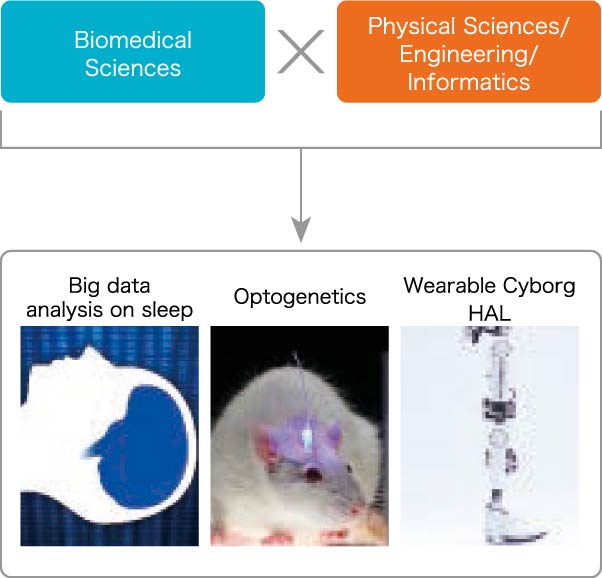
3. Pre-admission program in Humanics
In collaboration with bachelor’s and master’s programs, applicants in the medical sciences (6 years system) who wish to enroll will be given an opportunity to study physical sciences, engineering and informatics, and applicants in the physical sciences/engineering/informatics (4 years) will be provided basic knowledge in medicine, as well as practical training and exercises.
- Fig.1Big data analysis of sleep, optogenetics, Wearable Cyborg HAL, etc. are created by the fusion of biomedical science and physical sciences/engineering /informatics.

Yanagisawa>Professor Hori also taught me when I was a medical student.
Sankai>I was the only engineering student enrolled in his class. When I was told to come to the hospital at 7:30 in the morning, there would be a conference taking place already. Patient slides came out one after another, and terms I had never heard before were being tossed around. When that finished, we would go to each patient. This is the so-called “Daimyo Procession”.
Yanagisawa>The Professor’s round!
Sankai>When we made our way to the patients, the professor who found out that I was an engineering student would always asked me a lot of difficult questions. He would ask things like “what is the pore size of the artificial kidney membrane now?” so, I always felt a lot of pressure (laughs). But when we were allowed to observe surgical operations, Professor Hori kept me at the front and explained everything to me one by one. In a sense, he was doing what Humanics mentors would be doing nowadays.
Yanagisawa>Great.
Sankai>It was very nice to experience these moments every week in my youth. In retrospect, it was wonderful to have a culture that accepted different worlds with different approaches simultaneously. I think the same could be said for the academic discipline of Humanics.
Yanagisawa>The improvised way you learned both fields is made commonplace in Humanics. In the case of Dr. Sankai, you may have happened to take medical classes, but it is not usually possible for an engineering student to get into a surgical site and see a clinical “daimyo procession” and an operating theater. This is something that even students studying medical engineering cannot easily experience. There is a strong impact if it can be done as a matter of course. You also touched the language spoken on the spot.
Sankai>What surprised me was that nobody would explain any of these terms. The lecture just proceeds with the assumption that everyone is following, so I had to study them on my own. The great thing about Humanics is that it grants the opportunity to jump into the frontier of the real world where you are compelled to keep up.

Becoming a talent who can handle the languages of both medical sciences and physical sciences/engineering/informatics.
Yanagisawa>Now let’s talk about me. In high school, I was a typical STEM student studying only physics and chemistry. I then enrolled in the school of medicine at the University of Tsukuba. When I was the first year student, I took the class taught by Professor Kaichiro Yanagisawa (unrelated) of genetics, and I realized that modern biology is very exciting. In the meantime, I had the opportunity to meet with physical science and engineering professors, joined a group of young researchers of mathematical engineering, and was exposed to fields such as medical informatics and quantitative analysis. In 1985, when I was a sixth-year medical student, I also wrote an original paper on the subject of cell cycle.
Sankai>That’s quite early.
Yanagisawa> I came up with a quantitative model by myself and performed mathematical simulation of the cell cycle. The experiment was conducted at the Lawrence Livermore Laboratory in the United States for three months each in the winter and summer of 1984. The cell cycle was experimentally measured by flow cytometry, which was state-of-the-art at that time, and simulated with the Cray-1.
Sankai>Cray-1, it was a supercomputer of the era wasn’t it? It must have been pretty special to be able to have access to an environment with Cray-1 in your days.
Yanagisawa>I didn’t even study for entrance exam in high school, but there was an award in my high school that commended me for excellent research in science. I decided to take it with a friend who was strong in software and we made a personal computer from scratch. Created a simple interpreter programming language using assembler language.
Sankai>That’s amazing.
Yanagisawa> After I entered graduate school, I became so involved in experimental biology research that I was far away from actually using quantitative methods. But I’ve always had a sense of crisis. This is because, even though we were doing joint research with the mathematical sciences, we sometimes did not understand each other. I thought this was very bad. That’s why when I applied for this program to the MEXT Graduate School of Excellence, I argued that “we should have a double mentor system.” Students were always assigned two supervisors to force them to learn medical biology on the one hand and physical sciences/ engineering/informatics on the other4. For example, students from engineering will have direct access to clinical medicine from the first year, just like Prof. Sankai. They are still young and can absorb a lot if exposed. I think that such an environment will cultivate outstanding talents.
Sankai>It is nice that we agree that the target is “people.” There are a lot of things in the natural sciences that exist without the presence of humans, but “people” cannot be the target without the existence of humans. In that sense, Humanics is a place where this image of people provides a certain directionality while medicine and engineering can march forward as one.
Yanagisawa>It’s just right for the times. When I entered graduate school, it was difficult for biology to generate data anyway, but in the age of omics, it became relatively easy to get large amounts of biological data. Biology students in Humanics are now trying to use mathematics and informatics as tools. Eventually, I think we will go one step further from here, which will lead to biological theory and concepts from the mathematical side.
4. Double mentor system in Humanics
Students earn a Ph.D. degree through the “double mentor system”, in which faculty members from both biomedical sciences and physical sciences/engineering/informatics initiate a research collaboration to provide guidance to students. “Reverse mentor system” means that students impart knowledge from one field to another and act as a bridge between different research fields. Students will learn bi-disciplinary expertise as well as communication skills.
Sankai>What is important and at the core of this interaction is “evolving together”. Before I got my doctorate in graduate school, I was actually considering reentering the university to learn medicine from the basics. Instead, a professor advised me, “why don’t you try to coordinate with medicine.” Now that I think about it, I’m very grateful for his advice as this accelerated my growth beyond my imagination. I really believe that you, Professor Yanagisawa, also see Humanics as a curriculum that develops people, and medicine and engineering are really compatible.
Yanagisawa>For example, medicine literally uses engineering as a tool, but in fact, you will not be able to produce sharp results in bioinformatics, for example, unless you have a truly deep understanding. And there are extremely few good bioinformaticians in Japan. If you don’t understand mathematical principles, you can’t be an expert, and the language is quite different in the first place. It is essential to be able to handle both worlds of biomedical science and physical sciences/engineering/informatics.
Sankai>However I think it’s very important that you are able to clearly depict the concept behind the language in your head, and not just have a superficial understanding of the language. A high-level understanding of the language should allow you to jump to the next stage of thought and discussion instantly. Isn’t this Humanics a program born with that in mind? Time is limited, so while we can never be sure if we can reach the goals we place ourselves, Humanics can act as a trigger for some people who may go all the way. It is important for Humanics to become a field that allows for constant growth in a person so that they can navigate life in this society.
Yanagisawa>Ph.D. Program in Humanics has conducted an entrance examination twice a year so far, and there were 12 applicants for the winter exam in 2019. In the 2020 class, 14 students have passed. Enrolled students are outstanding, and there are many international students. This time, we also did an overseas entrance exam. Finally, would you like to give a message to students who are planning to take Humanics?
Sankai>I have only one message. Whatever your goal may be, become a pioneer who enjoys every moment of their journey. You may encounter many obstacles, but our time in life is limited. I want you to never forget the wonder and excitement of exploring new areas in your field.5
Yanagisawa>What I often say to young people is to study what they think is really interesting. If you don’t find it genuinely interesting yourself, there’s no way you can explain the excitement to others. That’s why in choosing Humanics, I want you to pursue questions and perspectives that you feel are truly really interesting. I want you to do something that you can boast about, “this is interesting” not just because someone said, “it would be interesting if you did this.”
You don’t have to force others to understand it. It’s more important to keep believing in yourself that this is really interesting.
5. Career path of Humanics students
Researchers creating
a
new interdisciplinary
field
Entrepreneurs who
industrialize
complementary
technology of human
function
Medical doctors with
knowledge of
Cybernics
and
informatics
Government
administrators who
can
make a novel plan
of
medical
administration


